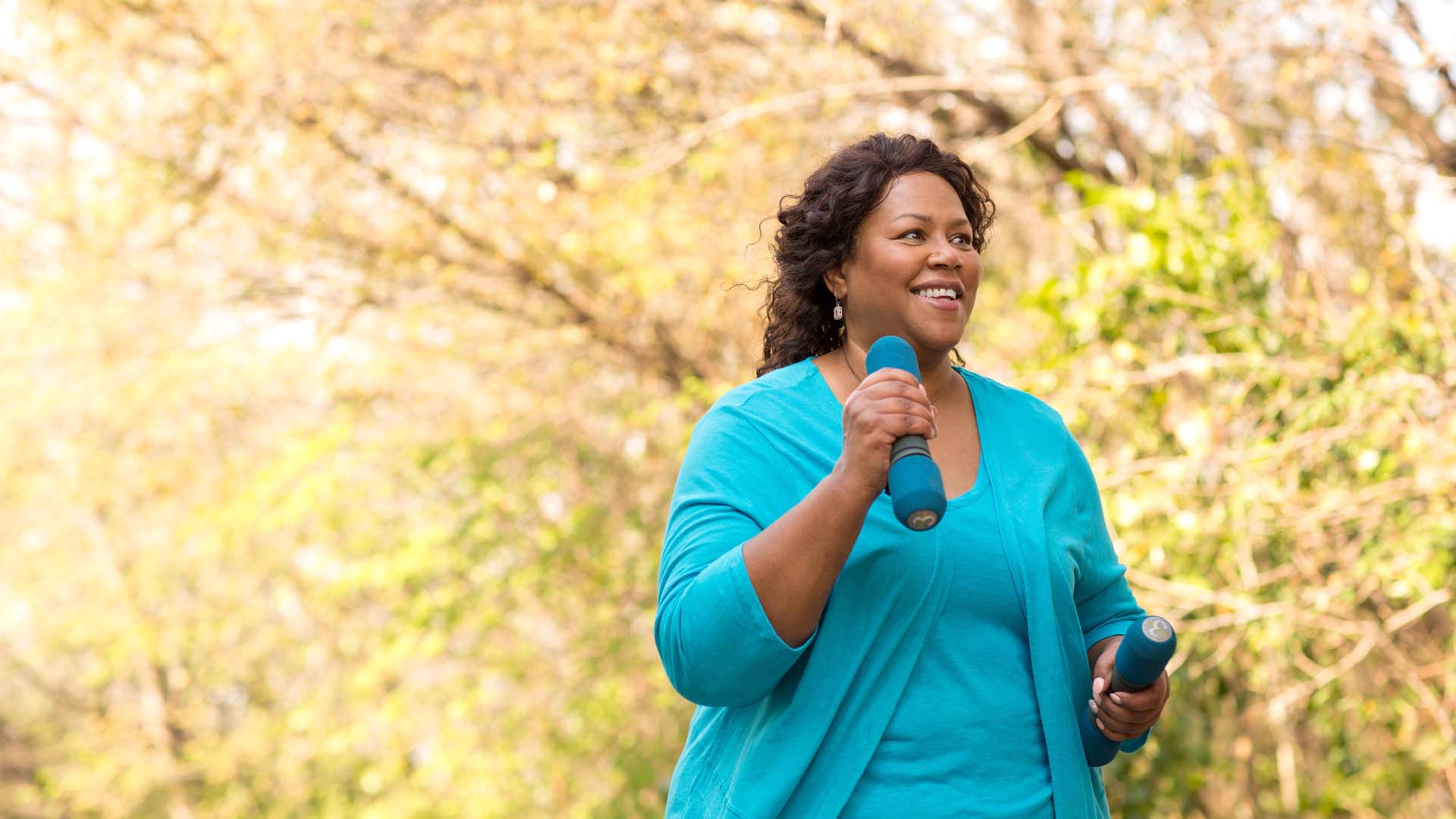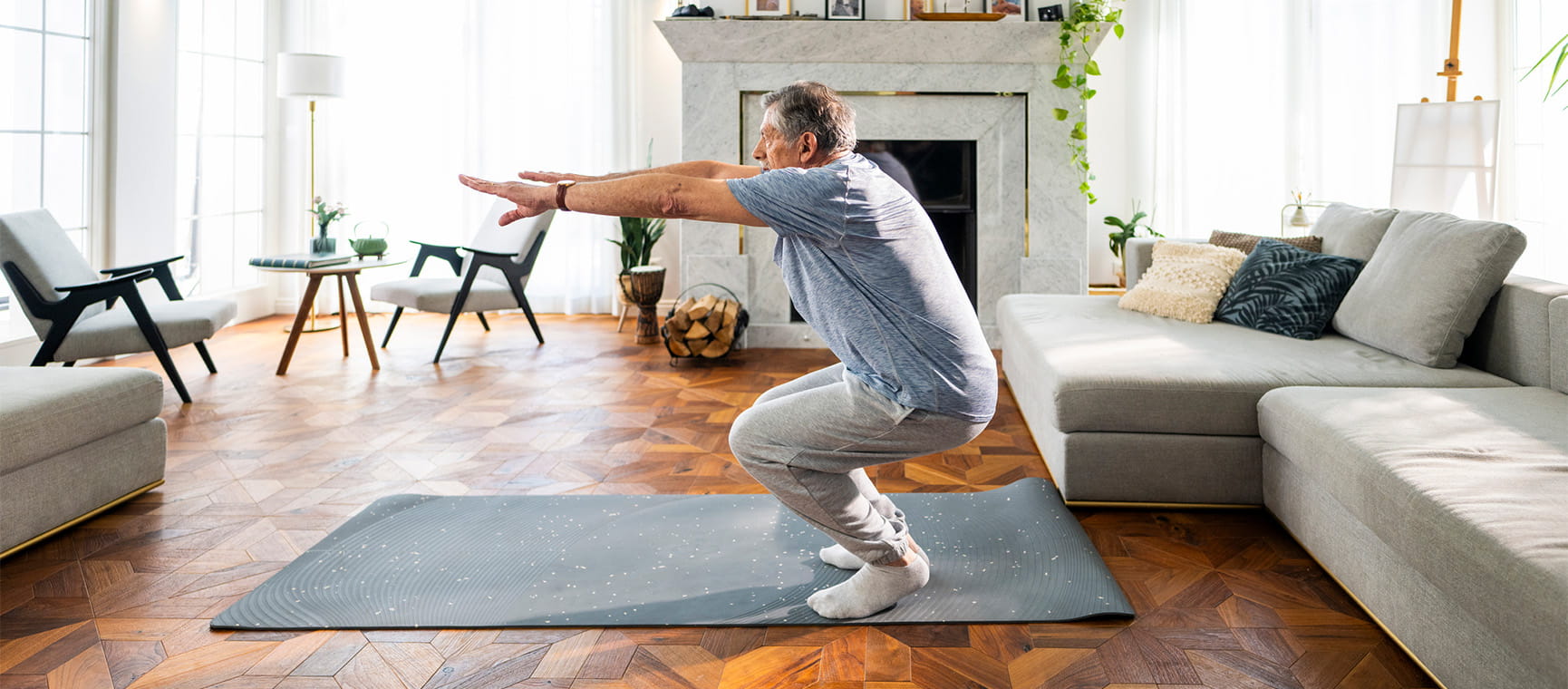Getting active again after Covid - what you need to know
Your Covid symptoms might have passed, but getting active again can be a real challenge. Our experts are on hand with all the tips you need.

Your Covid symptoms might have passed, but getting active again can be a real challenge. Our experts are on hand with all the tips you need.

Even though Covid no longer dominates our lives, it' s still very much with us.
Though we now, fortunately, have vaccines available, people are still catching Covid and there are reports of an increase in the number of people being admitted to hospital with Covid in summer 2024.
Symptoms can vary between people, but the virus is generally less severe than before. Many say they feel like they have a heavy cold, or sore throat. Some may need to take to their bed for a few days while others just stay at home and carry on with day-to-day life, albeit with slightly less energy.
After having Covid, it’s easy to think we should get back to normal quickly. But although the symptoms might have eased, Covid can still affect your body, especially when it comes to being active.
But following a few simple steps will help you to return to your pre-Covid levels of activity safely.

Long Covid (which means symptoms that last for months beyond the original Covid illness) is still affecting many people. Here we’re discussing what to do following a ‘regular’ bout of Covid.
If you think you have long Covid, talk to your GP or healthcare provider for more specific advice.
When you feel physically unwell you probably don’t feel much like exercising. But as Covid symptoms start to fade, it’s natural to want to get back to your usual routine.
However, you should wait for symptoms to disappear completely, otherwise you could prolong your illness. Abbas Kanani, pharmacist for online pharmacy chemistclick.co.uk, explained that advice differs depending on your usual level of health, and how unwell you have been.
“You should wait until you've had a minimum of 10 days’ rest from activities and have been symptom- free for seven days, before resuming any exercise other than walking or daily activities.
"However, this is a general rule of thumb for healthy individuals who have had minimal complications from the virus. If you had complications, or it is taking you longer to recover, you can start off with light movements and work your way up. Ultimately, you need to listen to your body. Rushing into intense exercise can reduce the speed of recovery.”
Dr Sunni Patel, personal trainer, nutrition coach and founder of Dish Dash Deets, adds: “The most important thing for people to remember is not to exercise while still having symptoms such as fever, fatigue, or shortness of breath. When you do feel ready to start adding movement after Covid, take your time and build up how much you can do each day.”
As a personal trainer and fitness instructor, I have both seen and felt the effects Covid can have on a person returning to fitness long after they ‘feel’ better. Primarily the two symptoms that linger, and prevail the most during exercise, are fatigue and breathlessness.

Covid is a respiratory virus, meaning it affects the function of your lungs. Even after recovering from the virus, you might find it hard to breathe deeply. It is normal to feel out of breath when we’re doing something energetic, like running, cycling, or taking part in an exercise class.
But Covid can leave you feeling like you’re suddenly unfit. In truth, you’re not. It’s just that our bodies need time to recover from the strain the illness has caused. You can’t ‘exercise’ the lungs, because they’re not muscles, but you can improve lung capacity.
This can be done by strengthening the muscles that support the lungs - the diaphragm, the muscles in the chest and back, and even the smaller muscles between the ribs (the intercostals). Strengthening these allow your lungs to expand and fill with air. When you’re in the early stages of recovery, Patel recommends starting slowly with some simple breathwork.
“When you’re at home, try to reduce sitting time by marching on the spot or doing some light stretches. You can also start adding some five-minute breathwork sessions throughout the day to help your lung capacity. Try a deep inhale through the nose and soft exhale out through the mouth and build up to a regular pattern of four-second box breaths.”
Box breathing is a breathing pattern that has many benefits. It can help the lungs to expand and fill, but it’s also a great stress reliever and tool for mindfulness as well as being beneficial for many health conditions.
You simply need to imagine holding your breath in a box, so you inhale for four seconds, hold that breath for four seconds, exhale steadily over four seconds, and then hold at the bottom of that exhale for four seconds before inhaling again.

You might have an impressive 10km run time. you might attend Zumba three times a week or you might just enjoy a stroll to the corner shop. Whatever your regular routine looks like, you need to be okay with not achieving it for a while.
Recovery is a personal thing; some people will bounce back quickly, but others take much longer. The most important thing is to pay attention to how you’re feeling.
It can be upsetting if you can't get out for a walk or have no energy for your Pilates class. But it won’t always be like that. The key is to build up slowly – even tasks at home can be counted as a form of exercise to aid recovery.
“Find a time in the day where you are not too tired to add gentle movement - and factor in recovery time and rest days to not cause too much of a strain,” Patel says.
“Listen to your body. When you feel ready to do so, think about adding some simple strength movements to help support your immune system, muscle strength and endurance,” Kanani says.
“Activities around the house and gentle short walks are considered safer while you are recovering before returning to exercise. Once you feel strong enough, light household or garden tasks and light yoga have been found to be beneficial during recovery from Covid.
"A walk can give you an energy boost and help beat fatigue. It also tones your body which increases your range of motion, shifting the pressure and weight from your joints to your muscles.”

Walking is a great way to ease yourself back into being active , and Patel says it’s best to build it up in small increments.
“This could be by starting slowly with a short three to five-minute walk without stopping (or less if you feel breathless and tired) and gradually building this up by 30 to 60 seconds at a time as soon as it becomes easier, to get to a 10-minute walk.
This could then be two 10-minute walks a day which increase to two 15-minute or three 10-minute walks until you can gradually progress to a 30-minute walk.”
You can take the same principle and apply it to running, cycling or swimming, too. If you’re a fan of moderate to high- intensity cardio exercise (such as Zumba or spin classes), try a class that has light intensity movements to help you work back up to where you were.
Yoga, Pilates, or barre-style classes might be helpful.
Remember to focus on your breathing and trying to fully expand the lungs. Adding in some strength training will help with joint fatigue, since your muscles will become stronger. This doesn’t need to be lifting weights in a gym. You might like to try a few exercises at home using resistance bands or bodyweight.
Finally, it can be a good idea to make notes on how you’re feeling after each session and the progress you’re making. This can give you perspective when you feel things aren’t progressing as quickly as you’d like.
Your recovery might be straightforward, or it might be one step forward, two steps back. But working on recovery at a pace suited to you could even mean you come back fitter and more active than before.

Are you retiring at the wrong age? The best age to retire for your body, brain, happiness and pocket.


Everything you need to know about the lung infection, and how you could be ill with “walking” pneumonia without realising it.

Strong calves for a strong mind: how they support our circulation and brain health, with easy moves to strengthen yours at home.


Our GP Dr Mark Porter explains what can cause itchy skin, which is a common problem as we get older.

Worried you’ve morphed into Victor Meldrew? Find out how to battle that bad mood, and what to do if you’re stuck with a grouchy loved one.

The benefits of heat and cold therapy, and how Nordic bathing won over our nervous writer.

Here’s how to spot the symptoms of heat disease and reduce your danger.


The NHS winter vaccination campaign kicks off next week. Here’s the lowdown on what you need to book.

Pilates for back pain – what to do if you are suffering, and five gentle exercises that could help.

Dizziness or vertigo: a sensation of spinning, can stop us doing everyday things for fear of falling. Try these tips to stop feeling dizzy


You don’t have to put up with bladder leaks. We try out the latest pelvic floor gadgets for men and women.

Cataracts are a normal part of ageing. Learn how to spot the signs – and when it’s time to consider surgery.